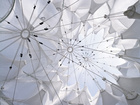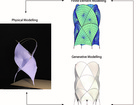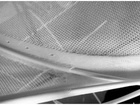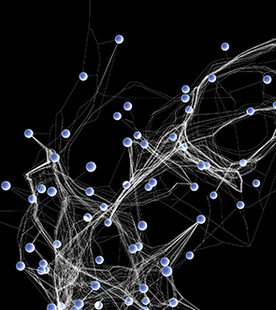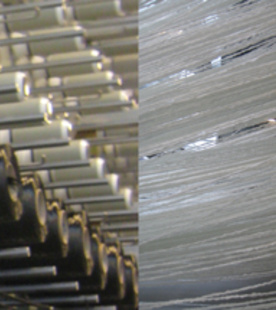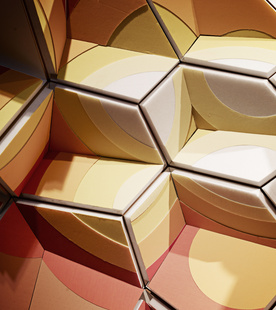Michel Schmeck: Simulating Textile Hybrid Structures
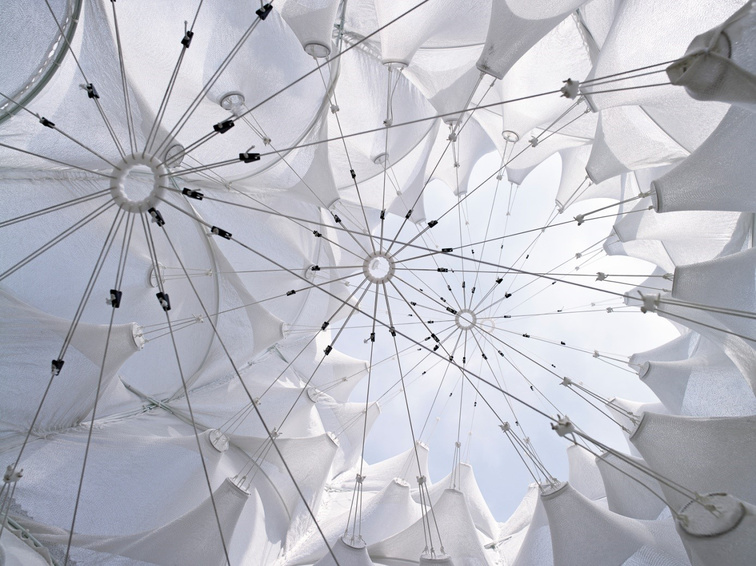
When dealing with form-active structures, support-conditions and external loading have decisive influence on the shape. These structures are so light and material efficient because the structure is placed in the natural flow direction of the forces .
However, the methods for form finding of membrane , bending-active and hybrid structures differ. Most of these methods are initially independent of the material, since the form of pure tensile or compressive stress systems is purely force-controlled. A consideration of material and cross-section is usually done after completion of the form-finding.
In textile hybrid systems there needs to be an equilibrium of the pure tensile membrane (axial stiffness EA) and the bent rod (axial and bending stiffness EA, EI) The relation of the stiffness is of great importance and driving the design. The membrane is restraining the bent element while the reset force of the rod is tensioning the membrane.
From a mechanical point of view stress levels and behaviour under external loading have to be analysed to stay within stress capacity and prevent the System from buckling and failing. Stresses of the shaping process can be considered by an iterative procedure with incremental bending, attaching of the membrane and relaxation of the hybrid system.
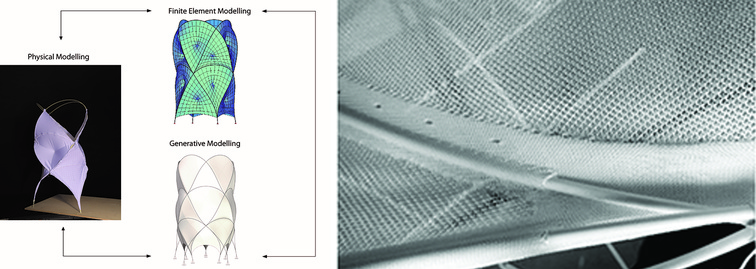
In April 2014 the project's first demonstrator was realised: an 8m high, hybrid tower, consisting of actively bent gfrp-rods, embedded in a bespoke knitted membrane. The Project was asking two questions:
1:the creation of new design methods that embed predictions about the inherent interdependency and material dependent performance of the hybrid structure and
2:the inter-scalar design strategies for specification and fabrication. The first investigation focuses on the design pipelines developed between the implementation of real-time physics and constraint solvers and more rigorous Finite Element methods supporting respectively design analysis and form finding and performance evaluation and verification. The second investigation describes the inter-scalar feedback loops between design at the macro scale (overall structural behaviour), meso scale (membrane reinforcement strategy) and micro scale (design of bespoke textile membrane).
The concept of the textile hybrid tower requires a balance between stiffness and rigidity to withstand external impact and a certain flexibility and softness to allow the structure to adapt to impact, store energy by deforming elastically and releasing this energy upon recovery. The arrangement of the actively bent rods forms a grid shell like structure embedded in channels and pockets inside a bespoke knitted fabric.


